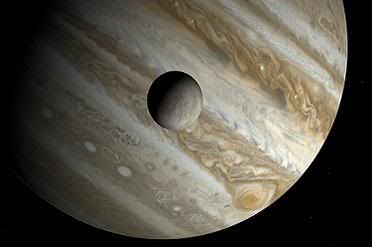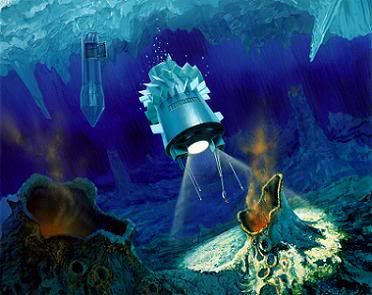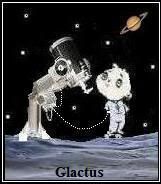|
|
Post by glactus on Oct 2, 2011 2:00:20 GMT
Europa is the sixth closest moon of the planet Jupiter, and the smallest of its four Galilean satellites, but still one of the largest bodies in the Solar system. Europa was discovered in 1610 by Galileo Galilei and possibly independently by Simon Marius around the same time.  The Jupiter moon Europa. Does it harbor living microbes? Slightly smaller than Earth's Moon, Europa is primarily made of silicate rock and probably has an iron core. It has a tenuous atmosphere composed primarily of oxygen. Its surface is composed of ice and is one of the smoothest in the Solar System. This surface is striated by cracks and streaks, while craters are relatively infrequent. The apparent youth and smoothness of the surface have led to the hypothesis that a water ocean exists beneath it, which could conceivably serve as an abode for extraterrestrial life.  Europa in orbit around Jupiter Although only fly-by missions have visited the moon, the intriguing characteristics of Europa have led to several ambitious exploration proposals. The Galileo mission, launched in 1989, provided the bulk of current data on Europa. A new mission to Jupiter's icy moons, the Europa Jupiter System Mission (EJSM), is proposed for a launch in 2020. Conjecture on extraterrestrial life has ensured a high profile for the moon and has led to steady lobbying for future missions.  An artist's rendering of a probe beneath Europa's surface  Credits: These are non copywrite images Text by Wikipedia |
|